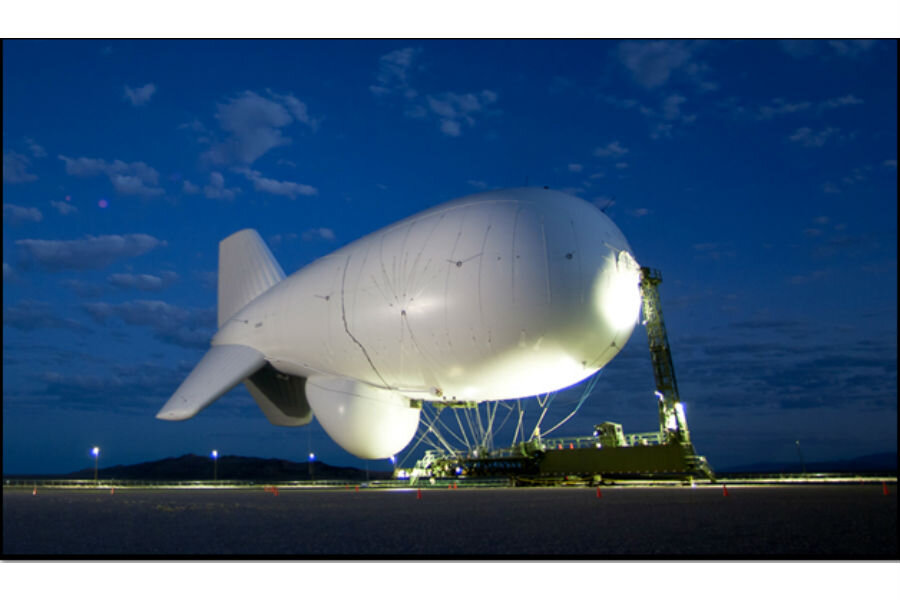Pentagon's floating missile defense future: a pair of billion-dollar blimps
Loading...
| Washington
Two US military blimps flying 10,000 feet above the East Coast will act as a new missile defense system for the United States.
The giant airships, known as the Joint Land Attack Cruise Missile Defense Elevated Netted Sensor System, or JLENS within the Pentagon, will be able to scan the oceans and coastline in a 340-mile radius, or from Norfolk, Va., to Boston.
It is designed to defend against cruise missile attacks, or the sort of rogue aircraft incursions that happened during the 9/11 terrorist attacks.
The US military previewed the giant balloons, which cost a reported $2.8 billion, in the skies near Baltimore for the media on Wednesday. They are expected to be fully operational by February and will be integrated into the defense systems of US Northern Command, which can respond with patriot missiles in the event of an attack on the US homeland.
But why giant helium-filled balloons? In an age of high-tech cyber-linked sensors, the choice might strike some as rather primitive.
“Blimps have been around a long time – they were very effective in World War II because of their consistent capabilities in anti-submarine warfare,” says Chet Nagle, a former CIA officer and naval aviator, who now serves as the director of the Committee on the Present Danger, a nonpartisan lobby group that focuses on terrorist threats.
Blimps were also used as artillery spotters as early as the Civil War, he notes.
The new JLENS system is equipped with a sophisticated radar system, but has the benefit of being relatively inexpensive to operate, if not to build – one blimp can stay up at 10,000 feet for 30 days at a time, with a five-man crew on the ground to man it.
Given its range of hundreds of miles, some privacy rights organizations have raised concerns about the blimp being used to spy on average citizens.
“We don’t really care about radar being aimed into the Atlantic Ocean to detect cruise missiles,” David Rocha, an attorney with the American Civil Liberties Union of Maryland told the Baltimore Sun in June. “There’s no privacy implications in cruise missiles. But they have said that this same technology can also detect vehicles on the ground, and that they’re not ruling out mounting other surveillance technology on this platform. And that does raise huge concerns.”
Defense contractor Raytheon said in a news release last year that it had equipped the JLENS with optical infrared sensors “enabling operators to watch live feed of trucks, trains, and cars from dozens of miles away.”
As it stands now, the JLENS is equipped only with radar, not cameras.
“Even with a sophisticated radar, you can’t actually see, let’s say, markings on an airplane or truck,” Mr. Nagle says. “You can’t track John Q. Citizen. It’s a legitimate concern in these days of Snowden. I sympathize with that,” he adds. “If balloons had cameras on them, they could see those things – but they don’t have cameras.”







